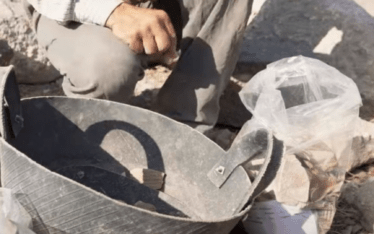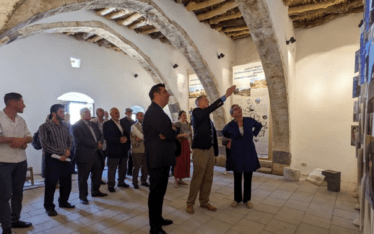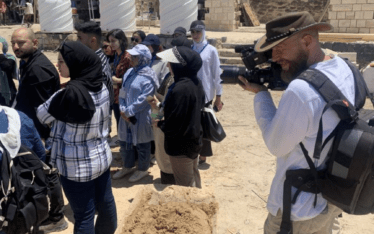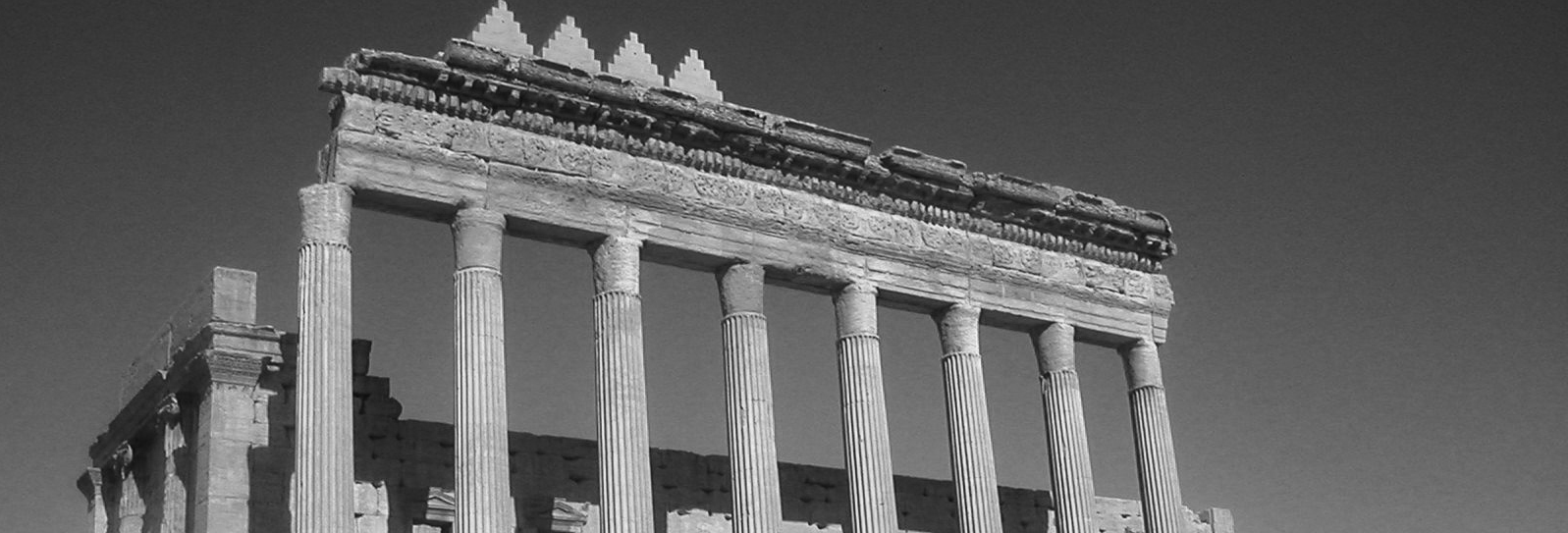
Cultural Heritage Response Unit | A look back at 2022
- Home
- Cultural Heritage Response Unit | A look back at 2022

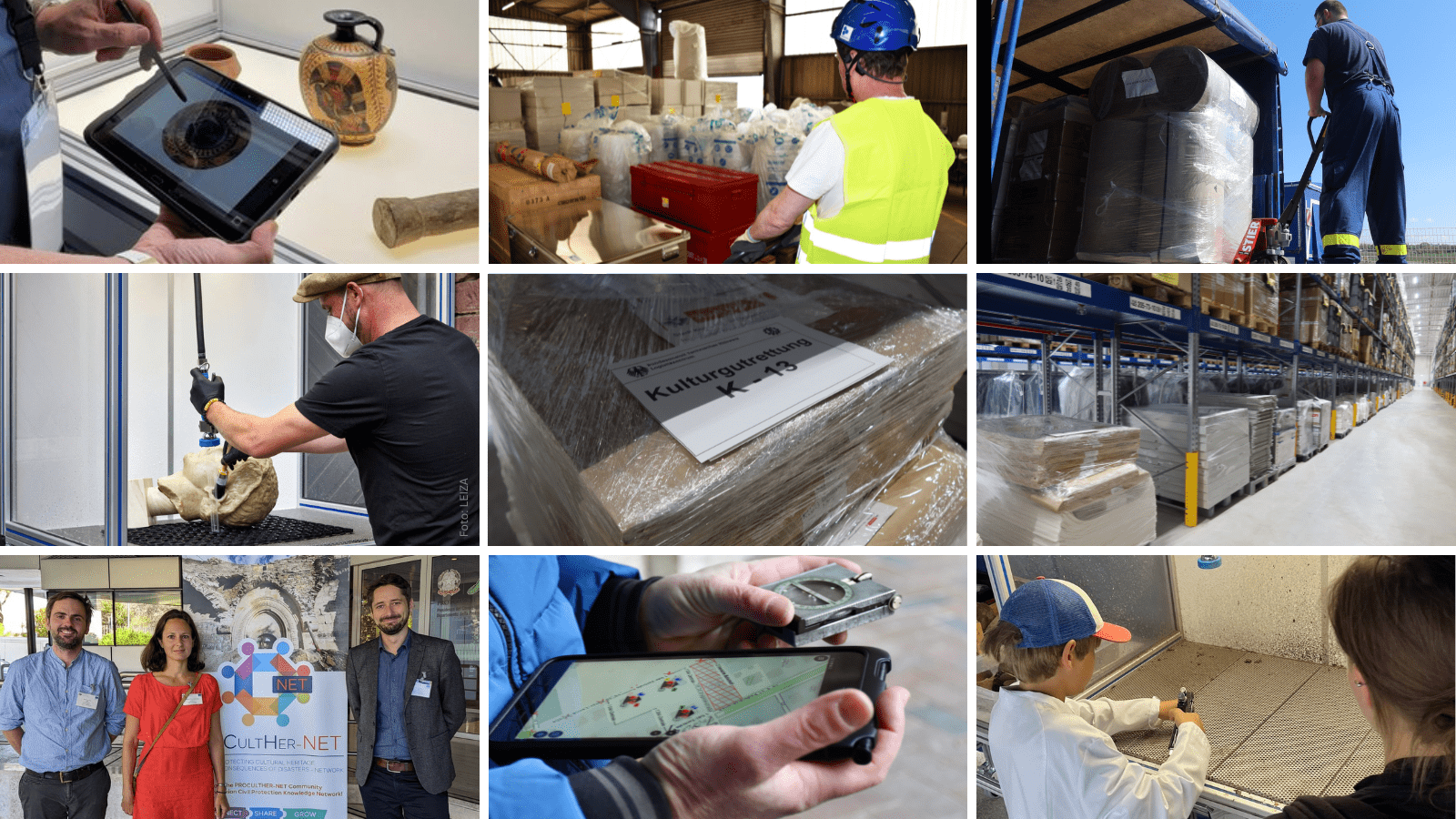
Our team wishes you all the best for the new year! 2022 was a very eventful year. In our review of the year, we offer an insight into the work of the Cultural Heritage Response Unit project.
The Cultural Heritage Response Unit (KGR) project is aimed at creating a mechanism for the rapid provision of aid for cultural assets in crisis situations worldwide. The mechanism envisages that, in the event of a disaster and an appeal for aid from the country concerned, teams of experts are sent from Germany as part of international relief efforts to help out in situ with the damage assessment and documentation and with emergency measures targeting both built heritage and mobile heritage such as collections, libraries or archives. The project is jointly developed and implemented by three partners, the German Archaeological Institute (DAI), the archaeological research institute Leibniz-Zentrum for Archäologie (LEIZA), and the German Federal Agency for Technical Relief (THW). The project evolved further in 2022. The activities of the project team were determined to a great extent by the Russian war of aggression in Ukraine. The Cultural Heritage Response Unit was involved in several initiatives intended to assist colleagues in Ukraine in the preservation of their country’s cultural heritage. In spite of the new challenges the different areas of the KGR’s work were successfully further developed. In this review we will look at some of the measures undertaken which illustrate our team’s commitment.
Cultural Heritage Response Unit logistics network for aid supplies
The Cultural Heritage Response Unit (KGR) and the DAI joined forces with its partner THW to set up a logistics network for the rapid and efficient delivery of aid supplies to Ukraine. With the support of Blue Shield Deutschland e.V., the DGKS (a registered association for cultural heritage protection) and the team from SiLK – the Guidelines for the Protection of Cultural Property – with the emergency response organisations (“Notfallverbünden”) in Munich, Stuttgart, Cologne, Halle/Saale, Weimar, Dresden and Berlin, the logistics network was successfully up and running in 2022. In all, nine articulated lorries loaded with 290 pallets – approximately 41.6 tonnes – of aid supplies were dispatched to Ukraine last year through the Cultural Heritage Response Unit’s newly established logistics network with the assistance of the THW. The packaging material and supplies, for instance bubble wrap, archiving boxes, sandbags and fire extinguishers, were delivered to museums, archives, libraries and other cultural institutions and sites in the country thanks to the Heritage Emergency Response Initiative (HERI).






The network’s partners were able to collect substantial donations of money and material. The donations made it possible to protect monuments with sandbags and preserve paintings, archive material and archaeological objects from destruction thanks to boxing and protective material. The logistics network initiative is integrated in measures taken by the Safeguarding Cultural Heritage in Ukraine network, which was established by the Federal Government Commissioner for Culture and Media in conjunction with the Foreign Office.
Software for the documentation of cultural heritage – Translation into Ukrainian and training
The open-source tool Field Desktop (iDAI.field) was developed by the IT section of the DAI for archaeological field documentation and for documenting built heritage. It was translated into Ukrainian as part of the Cultural Heritage Response Unit project. In addition, online training courses in Field Desktop aimed at built heritage specialists in Ukraine were conducted.
Backup of research data from Ukraine
At the request of researchers from Ukraine, the DAI and the Cultural Heritage Response Unit project took steps to ensure the preservation of key research data relating to Ukraine’s cultural heritage. To prevent scientific data being lost in the course of the war in Ukraine, storage space was made available: in total 7 TB of research data were securely backed up in 2022. Colleagues in Ukraine also received help in backing up and transferring data and in meeting electricity and Internet costs. To this end the Federal Foreign Office via the Cultural Preservation Programme and the Hasso-Plattner Foundation provided the funds for short-term grants for archaeologists in Ukraine. As an extra safeguard, entire datasets were mirrored by the Hasso-Plattner Institute (SCORE Lab) and the Max Planck Computing and Data Facility.
In 2022, the multifunctional modular tables that were designed for the initial treatment and safeguarding of movable cultural property in crisis zones were developed further. Specialists in restoration – working as part of the Cultural Heritage Response Unit project at the Leibniz-Zentrum for Archäologie (LEIZA), formerly the Römisch-Germanisches Zentralmuseum (RGZM) – developed and trialled scalable and transportable modular tables to be used in “first aid” for movable cultural property in disaster areas around the world.




In addition to drawing up scientifically based minimal standard procedures for the emergency conservation of damaged cultural property, the basic module of the various modular tables was extended in terms of its functionality and can now be used multifunctionally as a vehicle for transporting items. An illuminated photo table, whose functions were enhanced last year, can be used to document the condition of the salvaged item of cultural heritage on arrival and after emergency conservation. A wet-cleaning table for the removal of dirt from objects was further optimised in 2022. The dry-cleaning table is for use when objects have dust or rust on them. The final rescue module is the packing module, in which cleaned objects are prepared for transport. The development of modular tables is not yet completed. In future it will focus on non-archaeological objects of cultural heritage.
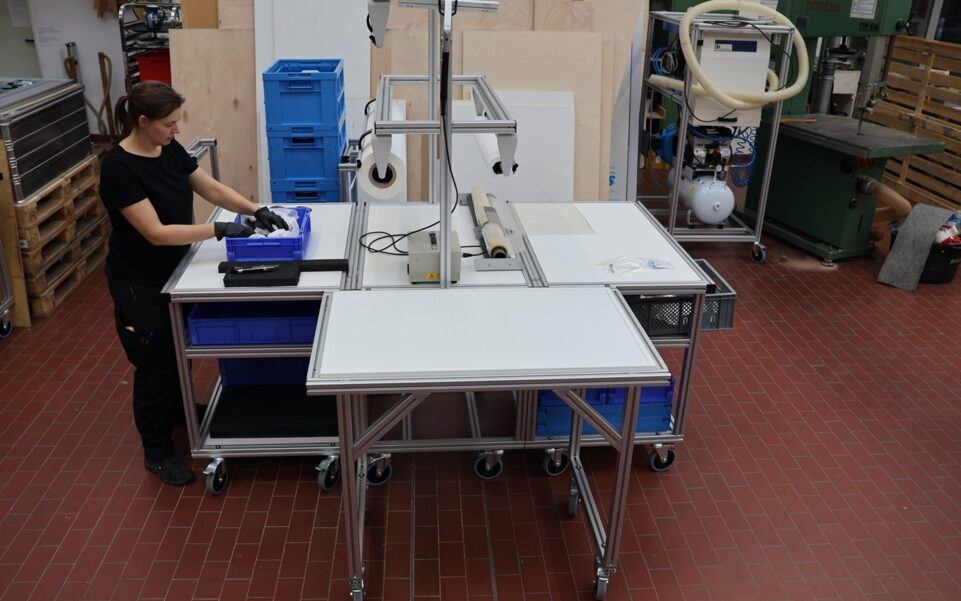
Volunteers working for the German Federal Agency for Technical Relief have also been involved in the Cultural Heritage Response Unit project. In 2022 over 20 events were organised with the participation of voluntary members of the THW, with more than 50 members taking part in the working groups of Logistics, Personnel, ICT and Standard Operating Procedures (SOP). In professional events too, such as the denkmal trade fair in Leipzig, the conference of the Excavation Technology and Field Archaeology Association (VGFA) and the Open Day of the Federal Foreign Office, volunteers from the THW joined the team from the Cultural Heritage Response Unit.
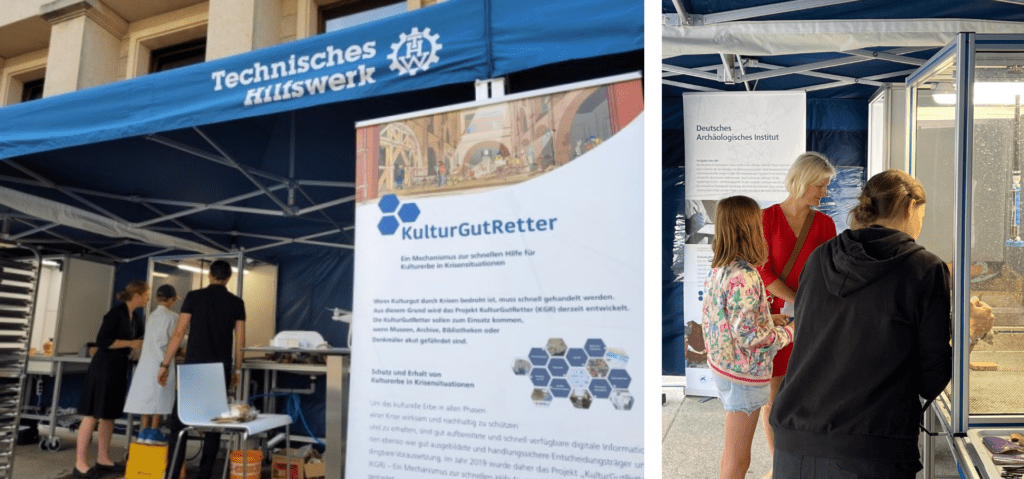
INTERNATIONAL NETWORK
At a number of international events, team members deepened contacts with specialists and discussed matters relating to cultural heritage in crisis. Experts from the DAI and the THW, as partners of the Cultural Heritage Response Unit, actively participated in the EU-funded project ProCultHer-NET. Among other things, Cultural Heritage Response Unit team members gave speeches at the Climate.Culture.Peace Conference organised by ICCOM/British Council, the ProCultHer-NET Initial Planning Meeting in Rome as well as at the University of Continuing Education (on the course Cultural Property Protection) and the European Security and Defense College, both in Krems.
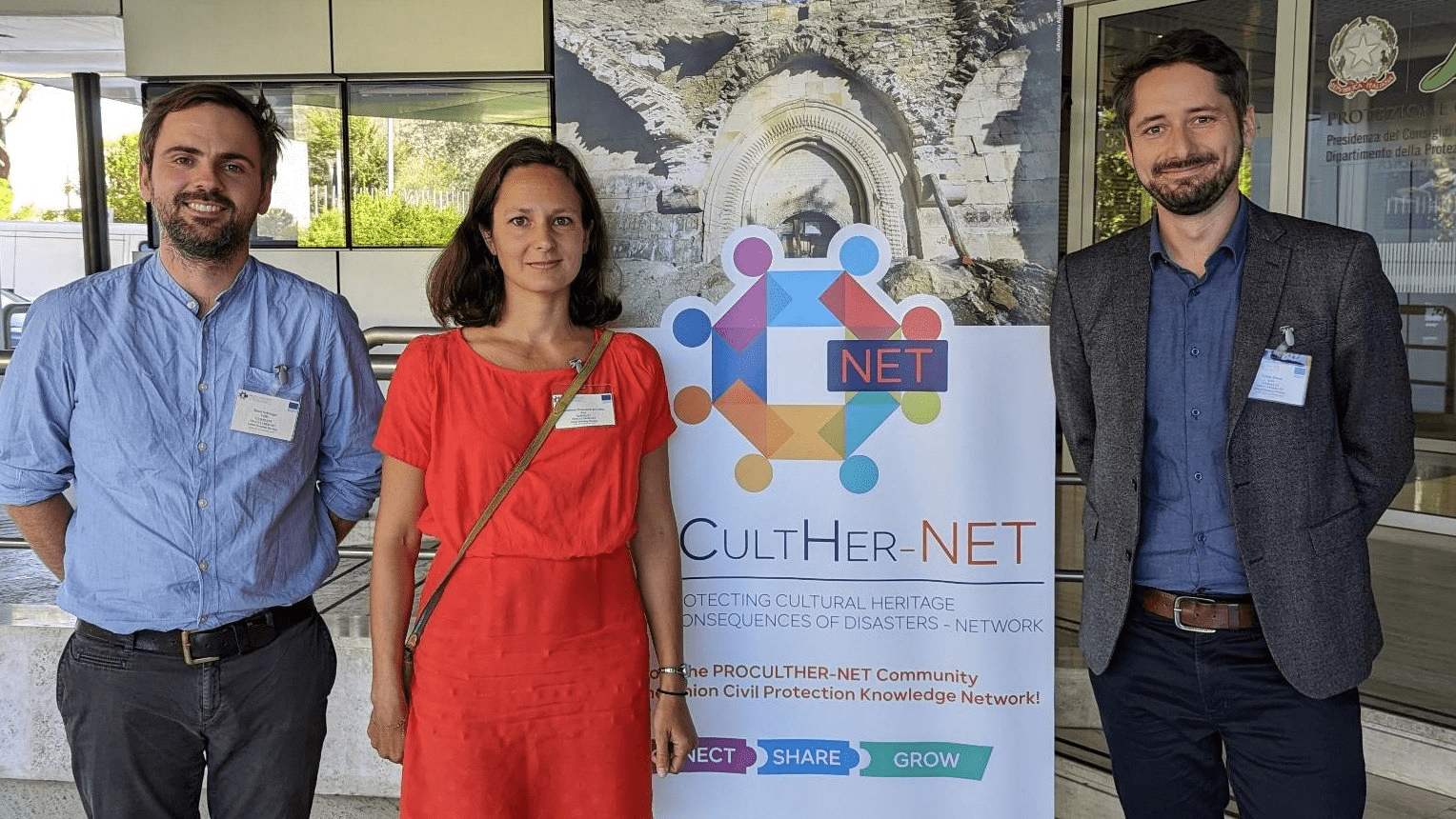
Conference: Groundcheck – Climate, Crisis, Archaeology
At the Groundcheck conference, discussion focused on the consequences of global climate change and on what climate change means for societies of the past and the present, with speakers referring to ongoing research. Another theme of the conference was understanding sustainable solutions adopted by societies of the past and making them useful for our own present and future. The conference also sought sustainable solutions for protecting cultural assets from the effects of climate change.
After a welcome by the Federal Government Commissioner for education and research policy at the Foreign Office, Vito Cecere, the conference was opened by State Secretary and Special Envoy for International Climate Action, Jennifer Lee Morgan, and began with an introduction by the President of the DAI, Prof. Dr. Friederike Fless. There was a podium discussion with Prof. Fless and Dr.-Ing. Katja Piesker of the DAI joined by Erhard Grundl, Prof. Monika Grütters and Michelle Müntefering, all members of the German Federal Parliament. Among several other exhibitors, the Cultural Heritage Response Unit together with its partners from the DAI, LEIZA and the THW presented its project and displayed the mobile modular tables for the restoration and documentation of cultural heritage in crisis situations.
Conference: Architectural Monuments in Conflicts and Disasters
During the denkmal trade fair in Leipzig, the conference Architectural Monuments in Conflicts and Disasters – Prevention/Intervention/Recovery took place on 25 November 2022. It was organised by the German National Committee of ICOMOS in cooperation with the German UNESCO Commission, the German Archaeological Institute and Blue Shield Deutschland. The several speakers at the conference approached a complex topic, the aim being to provide some orientation in the field of saving and protecting historical monuments in conflict and crisis situations for organisations and initiatives, cultural heritage specialists and restorers as well as interested members of public visiting the denkmal trade fair. Specialist presentations and podium discussions offered many opportunities to discover new things and communicate with experts. The papers delivered and the results of the conference are to be published as part of the series “ICOMOS – Hefte des Deutschen Nationalkomitees”.
Online courses for the MENA region
In 2022, demand for online courses offered by the Cultural Heritage Response Unit was exceptionally high. The 1,056 applications received testify to the great interest that young researchers from the Middle East and North Africa have in training courses on aspects of documenting cultural heritage. The online courses for the MENA region are coordinated by the IT section of the DAI in the framework of the Cultural Heritage Response Unit project. The aim of the project is to build capacity and to establish an international network of local experts in the MENA region. On the courses the young researchers learn about basic techniques and applications for the digital documentation of cultural heritage. In 2022, four courses were given on the topics: Spatial Databases and Analyses for Cultural Heritage Protection in open-source GIS and Recording Cultural Heritage for Post-Conflict Recovery using GIS. Last year a total of 61 participants (62% women, 38% men) were able to benefit from the training courses offered by specialists from the DAI.
Restoration work in Beirut since the blast
On 4 August 2020 many historical buildings were badly damaged by the devastating explosion in the harbour of Beirut. The DAI was quick to offer support and gave assistance in the precise documentation of damage and destruction and in communication structures between local volunteers, NGOs and Lebanon’s Directorate General of Antiquities (DGA), responsible for historic buildings. Starting in 2021, the DAI’s Orient Department ran a training programme for local craftspeople, through which traditional techniques were taught during restoration of the blast-damaged historical building at Medawar 749. In so doing, the DAI made use of the structures of the Cultural Heritage Response Unit, a mechanism for providing rapid assistance in disasters affecting cultural heritage.




The last roof tile was put in place on the historical building at Medawar 749 on 16 December 2022. The roof is now intact, the masonry sealed and the building therefore stable and winterproof. The training project was able to take place thanks to the kind permission of the owner and the support of the Foreign Office.
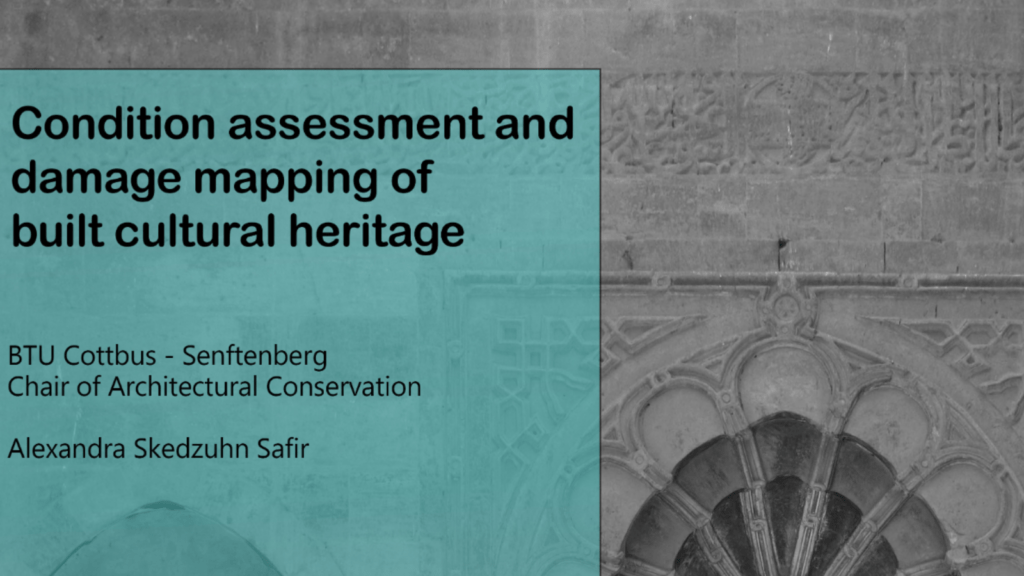
Condition assessment and damage mapping of build cultural heritage
The book “Condition assessment and damage mapping of build cultural heritage” by Alexandra Skedzuhn-Safir, Chair of Architectural Conservation, BTU Cottbus-Senftenberg, was published in English and Arabic and is available online.
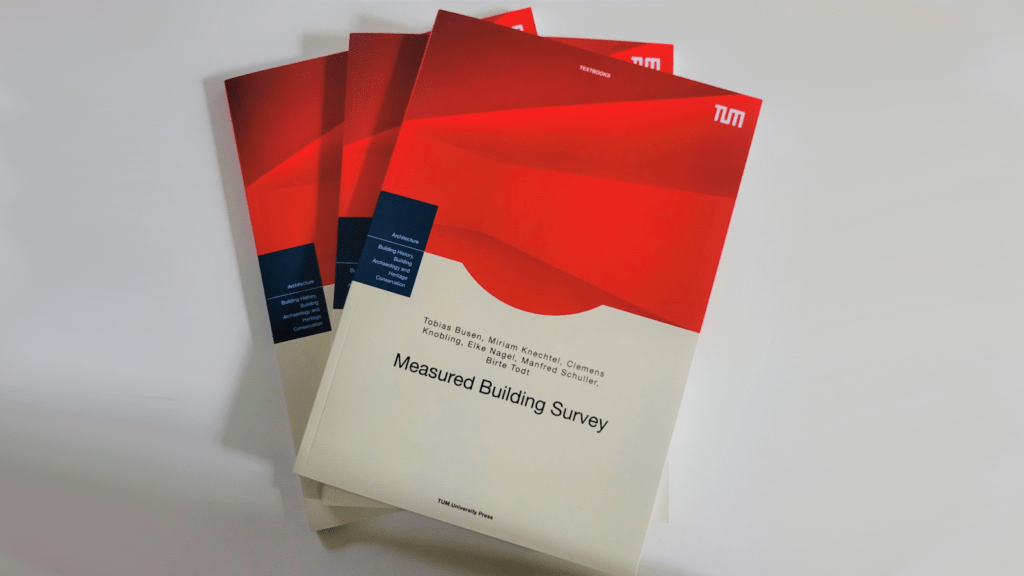
Measured Building Survey (English version)
In addition to a historical overview of building surveying as a method, this volume offers practical assistance regarding the different methods for documenting historic buildings – starting from manual methods of measuring up to electronic and computer-aided utilities available today. The book offers easy access to the topic of building surveying, both for students as well as for anyone dealing professionally with historic buildings.
Archaeological Heritage Network is made possible by many national and international partners. The Federal Foreign Office and the Gerda Henkel Foundation supports the network.
